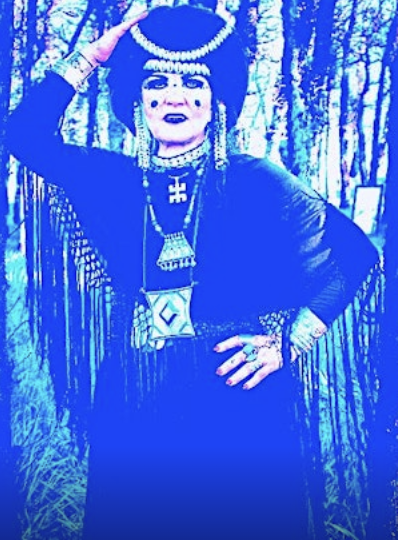NOLA'Amazigh: Dance Workshops with Amel Tafsout

Date/Time
Date(s) - 04/20/2024 - 04/21/2024
10:00 am - 2:00 pm
Location
Crescent Lotus Dance Studio
Categories
Cost:
80-245 USD
Contact Person:
Crescent Lotus Dance Studio
Email:
Website:
https://www.eventbrite.com/e/nolaamazigh-dance-workshops-with-amel-tafsout-tickets-770653042997?aff=ebdssbdestsearch
Phone:
Organization:
Crescent Lotus Dance Studio
New Orleans, LA.
Saturday, April 20
10am-Noon
DANCES OF MOROCCO: MOROCCAN CHAABI/SHAABI & HOUARA
Morocco is home to various types of dances. Music and dance are an integral part of the society. The dance is related to indigenous Amazigh people and their heritage.
Chaabi, meaning “folk”, refers to different music genres in North Africa such as Algerian Chaabi, Moroccan chaabi and Egyptian Chaabi. Chaabi music is frequently found in weddings and is associated with festivals. The use of popular language and the creation of new rhythms have made this style an essential complement to the dance. Chaabi music is for the people, but it has been made more popular by the Chikhat who female professional dancers and singers are performing together in cities and villages at various festivities. This dance style focuses on slow then fast and energetic isolated hips, quick and sharp body movements, pelvic undulations, belly drops, shimmies along with more graceful, flowing hand movements inspired by string sections in the music and rotations of the head that let the dancer’s long hair flow freely. There is a possibility to see men performing the Chaabi dance style, dressed as women but hiding their faces in public spaces such as Djama’ El Fna in Marrakech.
Join Amel for an invigorating exploration into the Chaabi dance style. Come and be ready to sweat!
Videos: https://www.youtube.com/watch?v=ZSls-_svngg
https://www.youtube.com/watch?v=qA2yQKU9BgY
https://www.youtube.com/watch?v=BZ9YnLAp_H0
Houara
A lively community dance of the Houara tribe, from Inezgane and Taroundant, South of Agadir, the Houara incorporates singing, footwork, flamenco like barrel turns, “vuelta que bradas” and jumping. The houara dance is a mixed gender folk dance, but the performance troupe includes several men and only one woman. All dancers form a tightly packed circle and take turns coming into the middle to show off intricately choreographed routines. One man may come into the circle alone. As the tempo speeds up, the woman rushes into the center of the circle to end the dance. The houara has traditionally been used as a spiritual folk dance by Amazigh tribes. When the rhythm reaches its peak, the woman rushes to the center. There follows a whirling dance of great power. Uncommon physical strength is required to keep up the rhythm and do such elaborate steps. The dance is without doubt one of the most spectacular in Moroccan folklore and arouses the enthusiasm of the audience.
Videos: https://www.youtube.com/watch?v=zNBkBmFL8Lo
https://www.youtube.com/watch?v=RrOhXGmBhUE&t=433s
1-3pm
AMAZIGH SHIMMIES: DANCE OF HE KABYL PEOPLE:
This fertility dance comes from the North-Eastern Algerian Mountains of the ‘Kabylie’ and is performed with a long scarf while the dancer is doing very small and fast hip movements. The shimmy and the trembling movements are related to pregnancy and fertility because they help the woman to give birth without too much pain. It is a very earthy and proud dance. Traditional Berber dances are mostly ritual in nature. The dance is both a public and personal expression, rich in symbolic dimensions that deal with subjects such as the fertility of Mother Earth, the rites of marriage and birth, and the communication between the earthly and the Divine. The Kabyle Berber dances are drawn from this rich colorful dance tradition that has been sustained by the unveiled, earthy, powerful, and proud women of Kabylia.
Videos: https://www.youtube.com/watch?v=b09bG3DygUA
https://www.youtube.com/watch?v=0Edib01sESM
7pm-10pm Hafla ($10 at the door)
Dance party potluck with social dancing, drumming, and short casual performances.
Sunday, April 21
11am-2pm
DANCE AS HEALING RITUAL: GUEDRA
This will be a ritual and spiritual topic. This workshop will include chanting and sound healing along with a focus on the Guedra. Guedra is a traditional circle dance that belongs to the Blue People of the Tuareg Amazigh, from Mauritania into Morocco and Algeria. Only women take part in the dance, and they usually wear loose blue robes and festive headdresses decorated with cowrie shells. To perform Guedra, the women start singing and clapping, and one woman moves into the middle to perform a solo. The soloist starts her dance covered in a veil that is gradually removed as she moves her hands and shoulders in sharp, quick movements. The dance ends when the solo dancer throws off the veil and collapses on her back. For the Blue People, Guedra is a ritual which aim is to envelop all present with “good energy”, peace and spiritual love transmitted from the depths of the Guedra’s soul via her fingers and hands.
Videos: https://www.youtube.com/watch?v=CoFrm_kaRIw
https://www.youtube.com/watch?v=Y28VkeCrwio
All dance workshops take place at Crescent Lotus Dance Studio in New Orleans. Class sizes will be limited to 20 participants.
Amel will be presenting lectures around New Orleans in the days leading up to the workshops. A hafla and/or short performance are in the works. Stay tuned.



